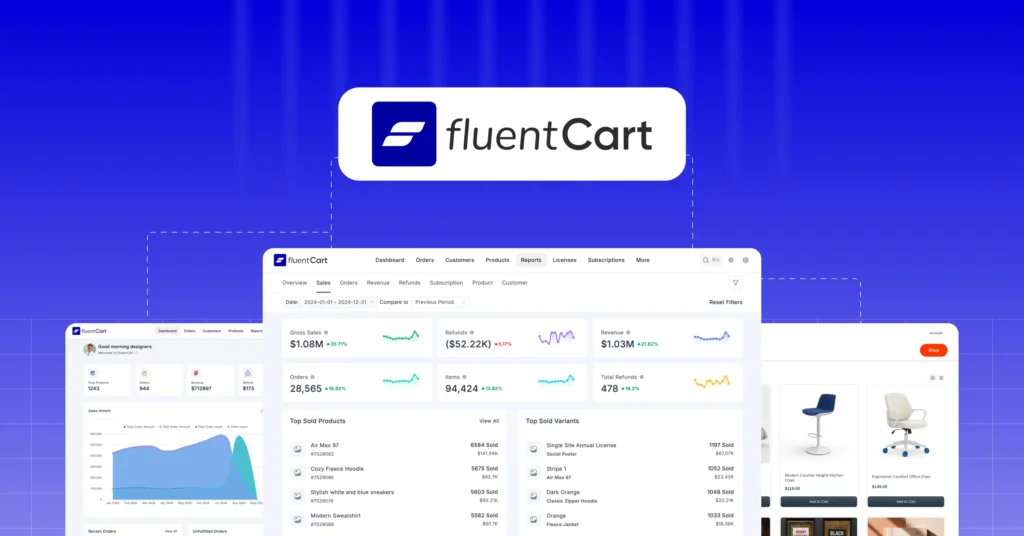
Technographic Segmentation: A Complete Guide to Targeted Marketing
No one can deny the fact that— technology will shape our future and we’re becoming heavily dependent on it. This indicates your marketing efforts are incomplete if you only focus on demographics and psychographics.
Therefore, understanding the customer’s behavior and preferences based on their technology usage is crucial.
But how to do that?
In this case, technographic segmentation can help you!
In this article, we’ll help you develop a deep understanding of technographic segmentation, how it works, and how to leverage its power in customer segmentation to develop a strong marketing strategy.
Let’s start.
What is technographic segmentation?
Technographic segmentation is a method of segmenting your target audience into distinct groups based on their technology usage, online behavior, and preferences. It goes beyond traditional market segmentation models and provides valuable insights into the technological aspects of the target market.
Brands and businesses use technographic information to divide the target audience into specific groups and collect technographic data to analyze, interpret, and make decisions on formulating marketing strategies for a particular group.
This approach helps them research and analyze the current technological trends and preferences, expectation gaps, and future expectations and reflect them on their current or future product and tailor relevant messages for specific audiences.
Moreover, it can be combined with other segmentation techniques to picture a clear & detailed outline of customer needs and expectations. This practice will help to design marketing campaigns, tailor personalized emails, and, build customer relationships.
Furthermore, it helps businesses to analyze their competitors on what technologies they’re using and what strategies they’re following which in return helps them to better understand the market competition and develop strategies that improve their product or service.
Benefits of technographic segmentation
Once you’ve understood the basic concept of this vital customer segmentation technique, you need to know why it matters for your business and customers. If you launch a new business or want to make a data-driven decision, technographic segmentation can be a blessing for you.
So, let’s explore the benefits of implementing technographic segmentation in business:
Improved customer filtering
This market segmentation technique helps you to identify and filter the prospects & customers based on their purchase history, technology usage, and preferences which in return helps businesses to differentiate prospects and customers and pinpoint their needs and expectations.
By understanding your prospects and customers you’ll achieve valuable insights and data which can help you to tailor more relevant messages and design effective email marketing campaigns.
Explore this article to get ideas on different email marketing campaigns
Increased engagement and sales
Another benefit of this powerful market segmentation is that it helps businesses to design strategic marketing campaigns and deliver personalized product recommendations.
When you’ve successfully divided your target audience into technographic groups it’s time to send them personalized product recommendations. This approach helps businesses to resonate with their prospects personally and increase the chance of sales.
Open newer opportunities
Who wouldn’t love to grab newer opportunities to connect with customers?
Technographics will help you to discover newer opportunities in new markets without accessing technographic information.
Once you’ve identified your prospect’s technology stack you can start customizing your content and send relevant messages based on their needs and preferences. This practice will help you to meet the requirements of your audience and increases the chance of receiving a positive response.
These tactics open the door to newer opportunities to connect with your future customer and improve your conversion and sales.
Increased customer retention rate
Every business will want to build a long-lasting relationship with its customer and keep them buying its product through upselling and cross-selling. So, your ultimate goal should be to turn leads into prospects and prospects into long-term customers.
Learn how leads differ vs. prospects
Technographics can help you to research market trends, forecast market demand, monitor competitors’ moves, and improve existing or develop new products. And guess what the impact is huge!
Technographic analytics will help you to identify who is using competitors’ products and give you an edge to increase market share by targeting the competitor’s customer base by offering value or the solution they’re looking for.
And all these endeavors result in the establishment of new relationships, retaining your existing customers with upselling and cross-selling opportunities, and finally, asking them cleverly for reviews that help your business to grow.
Also read: The Benefits of Customer Segmentation for Your Business
Technographic data and how to collect them
Technographic data or technographics is the combination of the words “technology” and “demographics” and is a powerful tool for targeted marketing.
It provides information about the technology stack, including hardware and software usage, adoption rate, possible difficulties, and other technical attributes of the customers or competitors.
These valuable insights help to better understand the customers and competitors and segment prospects and customers to design effective strategies for the marketing funnel or sales funnel.
Following are some of the importance of technographic data:
- Creating a granular customer segment based on needs and expectations to ensure the effective use of sales resources
- Identifying the current pain points and problems faced by the target audience
- Distinguishing between leads who’ll be interested in new technologies and solutions and who’ll wait
- Reducing the lead time between customer requests and new release
- Make decisions on new product development, setting marketing campaigns, and customer service
Now, there are several ways to collect technographic data but we’ve mentioned three major sources from where you can collect reliable data for research, analysis, and decision-making. Let’s explore each of them-
Surveys
Phone or email surveys are a great way to collect technographic information for B2B marketing efforts.
Many companies reach out to target organizations to collect information on new technologies, deployment, and the adoption rate. This information helps businesses to collect generalized data directly from the ground level.
However, you might face several challenges while conducting surveys such as-
- Most companies might not respond to cold calls
- They might not provide accurate data
- The data collected might reflect personal preferences rather than broader organizational culture
Data Scraping
Data scraping or web scraping is a method of extracting information from a website by using a computer program. The collected data is stored on local files or spreadsheets. It’s the most efficient way to mine data from targeted websites.
This approach helps businesses collect more accurate and reliable data from organizational websites and get a deep understanding of their technology usage, application procedure, and targeted field. In fact, it’s more effective than cold calls or email surveys.
However, you won’t receive any hardware-related information and you’ll need technical expertise to ensure programs are collecting and reporting proper information. Keep in mind, security control of targeted websites may restrict data collection and available information may be outdated.
Purchasing from a third party
The simplest way to collect technographic data is to collect it from a reliable and reputable vendor. But in this case, you’ve to spend a significant amount of money to collect data from a third party.
Cloud-based SaaS solutions such as SaaS, PaaS, IaaS, etc., and service providers and data analytics firms have access to technographic data and can provide you with reliable, robust, and accurate information.
But keep in mind that the information might be limited, personal information might be anonymized, and all providers aren’t reliable.
Real-life examples of technographic segmentation
Examples are a great way to illustrate a complex subject easily. When it comes to a broader and more complex concept like technographics, some real-life examples can make it easier for you to digest and think from your business perspective.
That’s why we’ve presented some real-life examples of technographic segmentation for you to quickly grab the concept and take some inspiration and direction.
Let’s explore them together.
Website optimization
Technographic information from a website can help you to enhance your understanding of the technology preferences of website visitors. This information is helpful for understanding the behaviors and pain points of them.
For example, if you look at the below image you can observe important technographic data of the website visitors and they’re segmented into the following groups-
- Users by Platform
- Users by Session
- Users by Operating System
- Users by Browser
- Users by Screen Resolution
Users by Platform indicates the proportion of visitors browsing the website using Android, iOS, and Web. This valuable insight helps to segment the visitors based on their platform usage. Here 80.5% of visitors are coming from Android which is huge!
Users by Session defines how many users are landing on your website from different platforms. This vital information helps to understand user engagement, content quality, conversion rate, etc.
Users by Operating System help to identify the number of users visiting from different operating systems such as Android, iOS, Windows, etc. These important metrics can be used to optimize the website’s design, functionality, and user experience for all operating systems.
Users by Browser indicates the number of users browsing the site using different web browsers. This data helps to identify how much importance should be given to different web browsers to ensure browser compatibility, performance optimization, and user satisfaction.
Users by Screen Resolution provide data about the distribution of users based on screen resolution. This data helps to optimize the website for different screen sizes and mobile responsiveness.
All the mentioned technographic data help to segment website visitors and make data-driven decisions that improve user experience, increase engagement, and enhance overall performance.
Technographics is a powerful tool, isn’t it?
New game from a game development company
A game development company wants to develop a new PC game for its users. So, they want to know the technology stack of their targeted buyers. In this case, they used technographics to better understand their potential buyer.
How?
They used technographic data to analyze the hardware specifications, operating systems, and gaming habits of the potential buyer. This helped them to decide whether to develop a high-end game for specific users or a game that meets the hardware requirements of most of the users and provides the best possible experience.
New mobile app from a mobile development firm
A mobile app development company is determined to launch a new mobile app. To accomplish this goal they want to identify their target audience, understand their expectations, and tailor the app’s features and functionality accordingly.
They used technographic data to identify the operating system of the target audience, their app usage patterns, and which types of apps they use frequently.
These valuable insights helped the company to segment the large population into distinct groups and tailor their app development and marketing strategy.
They targeted a specific group of Android users who use productivity apps and looking for a better alternative. So, they started to develop their new app focusing on the pain points of the users and integrated the expected features and functionalities.
Plus ensured a user-friendly app interface to ensure optimal user experience.
Moreover, technographic data helped the company to tailor their marketing communication on specific channels to build anticipation for its upcoming app and improve conversion.
Challenges of implementing technographic segmentation
Although technographics is a vital customer segmentation technique, you need to know if there’re any difficulties or obstacles you’ll encounter while implementing it.
Following are some of the challenges to overcome to successfully implement this market segmentation-
- The dynamic nature of technology indicates the rapid technological shift and adoption that can happen abruptly. Consequently, the technographic segments may become obsolete and businesses have to regularly modify their technographic strategy to keep pace with the dynamic shift.
- Determining the correct technographic variable for a specific industry can be a complex and time-consuming task
- Technographic data is collected from research and various surveys which is a lengthy and expensive process
- It’s challenging to collect accurate, reliable, and up-to-date technographic data since people may not provide accurate information on their technology stack
- If you’re a small or medium business owner with a limited budget then it might be challenging for you to collect technographic data from a third party as the cost is high
- Lastly, integrating technographics with other segmentation is an arduous task for effective target marketing
The reasons mentioned above indicate that implementing technographics isn’t a lightweight job, it’s actually a heavy load to carry.
How to use technographic segmentation for marketing & sales
Technographic segmentation can be a game changer for your marketing and sales efforts because it’s a way of segmenting your customers and prospects based on their technology preferences and behavior.
So, blending technographics into your marketing automation strategy and shaping it as your target audience want means you’re on the right track to winning more customers and profit. Also, you’re staying in the competition by keeping face-to-face with your competitors in your niche.
Since technographics is a diversified field the use case and strategy development may differ for different businesses and products. We’re sharing a generalized approach to using technographic data for B2B marketing and sales.
Let’s begin!
Detailed customer segments
Once you’ve collected the technographic data of the target audience, granular segmentation will help you understand their technological preferences and pain points. This filtering will help to reach your prospects and customers more specifically and personally.
Also profiling them based on cloud-based or in-house software usage yields the opportunity to learn about your prospect’s qualifications and pain points to solve their current problems.
These initiatives will help your sales force to tailor their sales efforts to meet the expectation of your prospects and customers.
Personalized customer journey
Technographic data is a powerful tool for developing a lead generation funnel to design a smooth customer journey and turn prospects into paying customers.
Lead scoring and data enrichment will help you to create a clear and detailed customer profile that’ll shape the customer journey and nurture leads appropriately. Depending on the relationship stage, create helpful content for your target audience regularly that’ll solve their problems.
By understanding your prospect’s technology stack, you’ll be able to create helpful contents that resonate.
Lead prioritization
When you’re done with developing a deeper technographic & firmographic profile of your target audience, you’ll be able to identify which target account to prioritize and distribute leads among marketing and sales channels.
Lead prioritization will help you to differentiate between high-quality leads who’ve got a high probability of conversion and those who’ve got a low probability of conversion. It’ll help you emphasize specific groups and engage with them on a large scale.
Moreover, the combination of technographics and data enrichment will automate your lead prioritization process, leaving your sales team to take some rest with sales automation.
Account-based marketing
Account-based marketing is a B2B marketing and sales strategy aimed to target accounts that are the best match for a specific product or service. In this scenario, both the marketing and sales team have to work in collaboration.
Technographics will help you to construct the bridge between your marketing and sales team, forming a team combination and making their work efficient by uncovering whom to target, engage, and offer.
Moreover, account-based marketing has become the cornerstone for many B2B organizations because it benefits both parties. For you, it’s a profound effort to understand the organizations deeply, and for your target accounts it’s an opportunity to enjoy a tailored and personalized journey.
Due to the implication of technographic data, account-based marketing is highly targeted and cost-effective. And this helps to personalize your messages and build a deeper connection with your target accounts.
Announcement & press release
Whenever there’s an opportunity you should extract the benefit from new announcements or newsworthy content featuring your prospects.
This practice can be made more actionable and result oriented when you leverage the power of technographics. Follow the following tips to take advantage of news-driven campaigns-
- Keep track of newly formed mergers and acquisitions
- Stay updated on new rounds of funding
- Monitor the rollout of a new product or feature launch
- Stay updated on web reviews
- Keep a close watch on executive interviews and thought leadership content
Afterward, use technographics to reach out to these kinds of news-driven campaigns to support your approach.
Implementing technographics in email marketing
If you’re running a business in the technology niche and want to leverage the power of email marketing using technographic segmentation, then you’re doing it right.
Email marketing can help you to send personalized messages to your target audience based on their technology preferences & behavior and can significantly improve the effectiveness of your email marketing campaigns and conversion rate.
Follow these tips to effectively use technographic information in your email marketing campaigns and turn your prospects into paying customers:
Gather technographic data
Collect technographic information about your subscribers using email surveys and forms, progressive profiling, lead magnets, etc.
This information can be their needs and interests, hardware and software usage, technology adoption, online behavior, problems, opinions, etc.
Integrate with behavioral and demographic data
Integrating technographic data with behavioral and demographic segmentation data will help you to depict a detailed and accurate profile of your customer’s needs, interests, and pain points.
This approach is highly beneficial to understand your target audience comprehensively because you’re not only focusing on their technology preferences but also analyzing other relevant factors such as age, income, location, engagement pattern, etc.
Set segmentation criteria
After collecting the necessary data and building an email list, set your segmentation criteria depending on your email marketing objectives. This will help you to send personalized and targeted messages to each group.
Your segmentation criteria will depend on hardware usage, software preference, online behavior, etc. Some of the most common segmentation criteria you can use are-
- Operating system
- Device type
- Internet browser
- Tech interests
- App usage etc.
Automate your email campaign
Automating your email marketing campaigns will give you the upper hand in sending timely and relevant emails to your audience, which will help you to turn them into loyal customers.
You can use powerful and reliable email marketing automation tools like FluentCRM to build your email list, segment them using different technographic criteria, and finally design your automation funnel that automates your conversation.
Send personalized emails with product recommendations
Personalized emails are a powerful force for conversion. Since it’s an effective communication method that reflects the pain points of the recipient specifically, it can do wonders for you in an inconceivable way.
So, personalize your message to create specific and helpful content that clearly defines the value proposition of your product or service, and how they can meet their expectations and solve problems.
Perform A/B testing
Perform A/B testing to evaluate the effectiveness of your technographic-based email campaigns. Test different segments of your email such as subject line, email contents, CTA, etc. to identify which one performs better.
Following these email marketing practices will help you to win more customers through personalized messaging in the technology niche and your ROI will skyrocket!
Elevate your marketing efforts with technographic segmentation!
In this digital age, technographic segmentation can give you the upper hand to better understand your target audience based on their technology stack.
Integrating technographics with other market segmentation techniques will help you to understand your audience in detail, build a stronger bonding with your prospects and customers, give you a competitive advantage, and eventually improve conversion.
We hope this article will help you to develop a clear understanding of technographics and you’ll be able to build your marketing strategy using technographic data and enjoy its full potential in your marketing campaigns for target marketing.





Leave a Reply